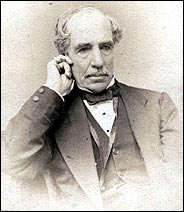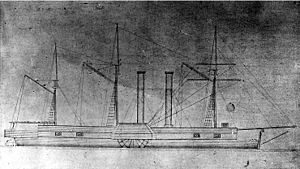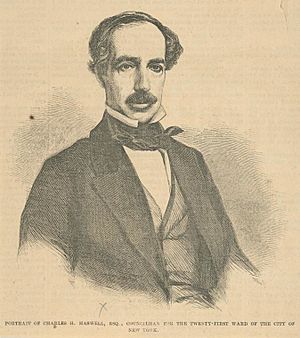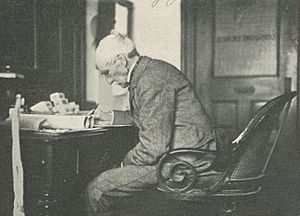Charles Haynes Haswell facts for kids
Charles Haynes Haswell (born May 22, 1809 – died May 12, 1907) was an important American engineer, politician, and historian from New York City. He wrote one of the most popular engineering books of the 1800s. He also published a book of his memories about New York City, taken from his personal journals. Haswell was the very first Engineer-in-Chief of the United States Navy.
Contents
Early Life and First Jobs
Charles Haynes Haswell was born on May 22, 1809, in New York City. His father was from Dublin, Ireland, and his mother was from Barbados. Charles went to school at Jamaica Academy on Long Island. He also studied classic subjects in New York City.
When he was 19, he started working at James P. Allaire’s engine factory. This was one of the best marine engineering companies at the time. Haswell quickly became the main designer there. By 1836, he worked for the West Point Foundry. The next year, he designed the Sweetheart, which was the first steam launch or yacht.
The U.S. Navy decided to build several steam-powered ships. Haswell had seen their test ships in New York Harbor. He applied to help supervise the engineering for the USS Fulton. This ship was being built at the time.
At first, his role was not official because there was no rank for engineers in the Navy. But in 1851, he was officially made a chief engineer. His appointment was made to count from July 1836, when he first started. This began his Navy career, where he helped design engines for ten warships.
In 1839, he worked on a Navy board. This board was in charge of building the steam frigates Missouri and Mississippi. He then worked on the Michigan. Later, he became chief engineer on the Missouri.
Haswell was very important in creating a group of engineers for the Navy. In October 1844, he was named the first Engineer-in-Chief. He then designed the engines for the Powhatan and San Jacinto. One of his smart ideas for the Navy was using zinc inside boilers. This helped stop them from rusting.
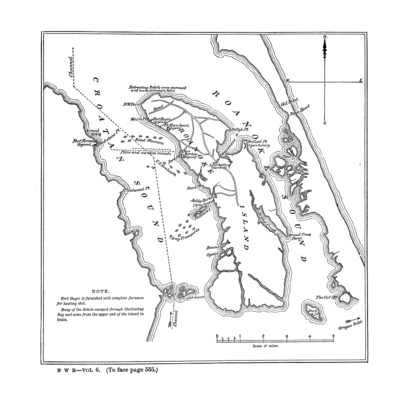
As chief engineer, Haswell helped set the rules for what Navy engineers needed to know. By 1850, his health got worse. He was told he was not fit for duty. However, the Navy did not get the message. He was ordered to sea with the San Jacinto. His health problems continued, and he left the ship during its trip. He went to Spain to get better, then returned to New York. The Navy still did not know about his health. They thought he had left his job and removed him from service in May 1852.
Haswell briefly returned to Navy service during the American Civil War. He was chief engineer for the Burnside's North Carolina Expedition. During the Battle of Roanoke Island, he even commanded a small steamboat. This boat helped pull a stuck gunboat away from enemy fire.
Working in the Private Sector
After leaving the Navy in the early 1850s, Haswell returned to New York. He started working for private companies, designing many commercial ships. He was a consulting engineer for several city boards. People often asked him about building strong foundations for New York City's growing skyscrapers. This was important because of the city's tricky ground.
After New York City bought Rikers Island, Haswell helped improve it. He even supervised the work himself when he was in his nineties! He also made improvements to Hart Island and Hoffman Island.
He used his marine engineering skills as a Surveyor of Steamships. He did this job for 40 years for companies in New York, Boston, Philadelphia, and for Lloyd's. The Emperor of Russia even sent him a diamond ring. This was a thank you for his designs of the Powhatan's engines.
Haswell loved yachting. He was the chairman of the race committee for the New York Yacht Club. He was also a member of many engineering groups. He regularly attended the Dutch Reformed Church.
Politics and City Service
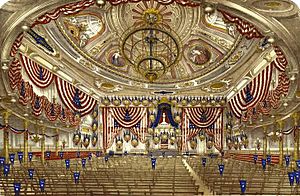
When Haswell returned to New York after his Navy service, he also became active in politics. In 1855, he was elected to the New York City Common Council. He represented the city's 21st Ward. In his last year, 1859, he was the president of the council.
He was also involved with Tammany Hall, a powerful political group. He was a leader, or Grand Sachem, of Tammany Hall from 1876 to 1882. Haswell also served as a trustee for the New York and Brooklyn Bridge. He was also President of the New York Board of Corrections. He was a lifelong member of the Democratic Party. When he died, he was the oldest living member of the Tammany organization.
Author: Engineer and Historian
Haswell also had a successful career as a writer. His most famous book was The Engineer's and Mechanic's Pocket Book. It was first published in 1843. By 1907, it had been printed 72 times! People described it as "Engineering 101 meets Ripley's Believe It or Not."
He also wrote other technical books, like Mechanic's Tables (1856) and Mensuration and Practical Geometry (1858).
Haswell is also known for writing about everyday life in New York City. From the age of 9, he kept a private journal. This journal was the main source for his book, Reminiscences of the City of New York by an Octogenarian (1816–1860). This book was published in 1896. It gives a special look at what life was like in New York City during the first half of the 1800s.
Family and Later Life
In 1829, Haswell married Ann Elizabeth Burns. They had six children who grew up: Sarah, Edmund, Frances, Gouverneur, Charles, and Lillie.
Just a few days before his 98th birthday, Haswell fell in his home. He dislocated his shoulder and never recovered. He died the next day, on May 12, 1907.
His son, Gouverneur Kemble Haswell, went to the U.S. Naval Academy. He became a Lieutenant Commander in the Navy before retiring in 1876. He briefly returned to service during the Spanish–American War.


